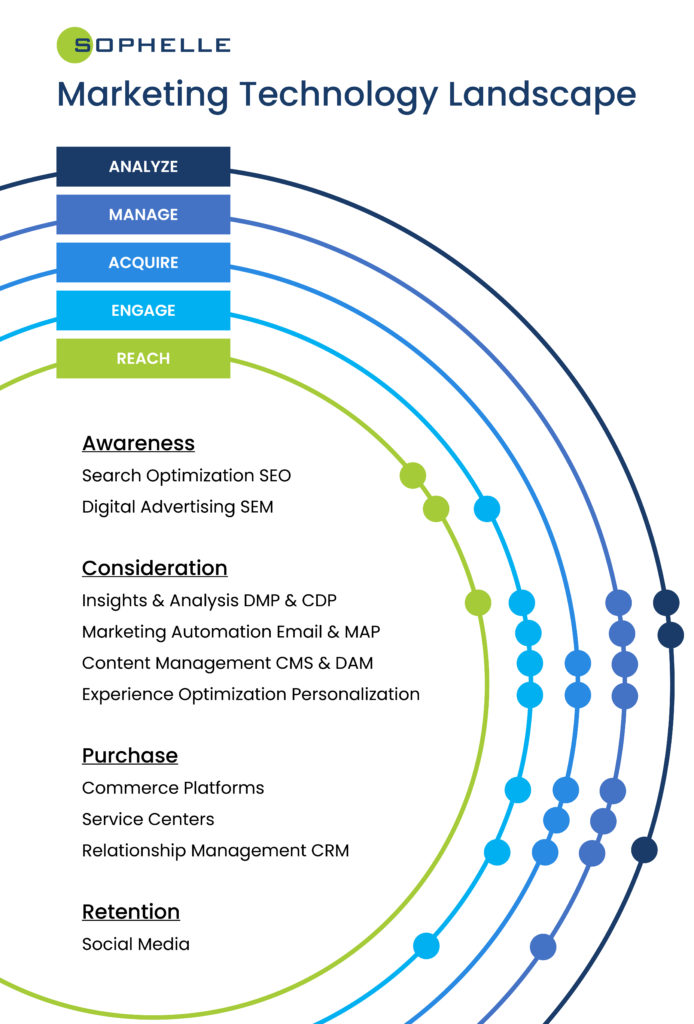Customers leave digital footprints or buying “smoke signals” every time they are online searching for products or navigating your website. However, without modern digital marketing tools, you will not have the visibility to see prospective buyers’ behavior.
Buying signals convey critical, dynamic, and timely information about buyers. A network of sensors captures and connects signals and is always present on inside marketing tactics — from content and offers to delivery channels and orchestration decisions. The interplay of buying signals and sensors helps retailers predict and respond to buyer needs in real-time and across omnichannel interactions. Some of the most common signal sources across customer interactions include web content consumption, in-market trigger data, identification of website visitors, and mobile location insight.
The Three Types of Buyer “Smoke Signals”
- Derived-Signal Sensors Based on the contextualization of multiple directed and detected signals. These sensors include the algorithms and rules driving decisions made by automated programs, triggering events, or computations within scoring models.
- Detected-Signal Sensors Not under direct control of the retailer, but rather acquired through third parties, such as internet data providers and social media monitoring tools.
- Directed-Signal Sensors Found in the activation of digital content within owned channels such as the website, landing pages, emails, and direct outreach activities.
Martech Solution Stack Components
Collect valuable insights, analyze critical data, and facilitate informed consumer-centric business decisions by developing an insights-driven strategy supported by the implementation of real-time analytics Martech solutions.
Dynamic and modern Martech solution stack components are required to read the buying signals, acquire segmented audiences, optimize marketing mix modeling, and drive customer lifecycle management.

Search Optimization and Digital Advertising
Through organic (SEO) Search Engine Optimization and paid (SEM) Search Engine Marketing, strategically build and maintain awareness (brand impressions) and acquire segmented audiences by utilizing key-word strategies and cost-effective top-funnel digital advertising tactics designed to reach target prospects and rapidly move them from the awareness to the consideration stage of the brand adoption customer funnel.
Insights & Analytics
Use a robust (DMP) Data Management Platform with data mining and audience segmentation capabilities to capture anonymous data, find more prospects, develop personalized advertising campaigns, retarget your most valuable customers, and drive traffic to the stores. Combine with a (DSP) Demand Side Platform to optimize the marketing mix.
Use a (CDP) Customer Data Platform to capture and manage critical customer data from online and offline sources to build rich profiles, access valuable audience segments with historical and behavioral data, support dynamic personalized marketing campaigns, and drive long-term retention tactics.
Content Management
Once you’ve acquired valuable customers, keep them engaged with a differentiated content strategy. It takes a lot of tools to manage complex and essential digital content. The synergy of these tools improves the workflows of creating and updating ecommerce websites.
While a (DAM) Digital Asset Management system helps manage all types of multimedia content for your entire organization across multiple channels, a (CMS) Content Management System is specific for websites and helps manage and publish content and to structure your web pages. In addition, a (PIM) Product Information Management system will manage central product master data (SKU, EAN, etc.).
Marketing Automation
Now it’s time to deliver your engaging content. (MAP) Marketing Automation Platforms help automate digital marketing efforts and optimize the buyer’s journey by attracting new leads, interacting with prospects, providing after-sales care, and growing loyalty. Marketing automation focuses on email and text calls to action on your inbound and outbound marketing programs that direct prospects to desired landing pages.
Experience Optimization
eCommerce personalization is a customer-centric approach primarily focused on driving customers to convert and allows you to offer customized digital experiences based upon customer behavioral and sales data. Personalization provides unique product recommendations, intelligent search, geotargeting, AI-driven chatbots, and continuous shopping. Personalization doesn’t just help with conversion. It also offers these key benefits that are essential to retailers’ success including improved customer experiences, higher customer engagement, higher conversion, and higher order value.
Relationship Management
Use an automated (CRM) Customer Relationship Management solution to engage valuable customers, track user-generated content, and manage interactions with prospects and customers. Manage loyalty programs and build communities with proper social media share functionality built into all channels and consumer touchpoints.
Sophelle’s Services
Sophelle offers expert advisory services to help retailers plan, select, implement, and optimize the dynamic and modern Martech solution stack components that provide the tools necessary to acquire valuable customers, increase revenue growth, decrease operational costs, and maximize internal collaboration and productivity.
Contact us to discover how to develop an insights-driven strategy for your business.




